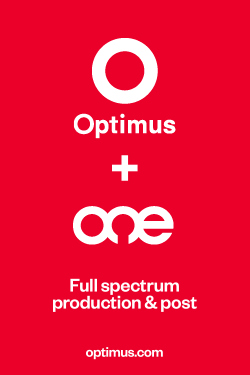
Editor’s Note: This is the first in a series on how President Trump’s sweeping new tariffs could affect the various industries Reel 360 News covers. Today, advertising, specifically brands and their ad agencies.
On April 2, former President Donald Trump announced sweeping new tariffs on imports to the United States, calling it “Liberation Day” and promising that the measures would level global trade imbalances. But while the rhetoric may fire up his base, the reality for brands, consumers, and the advertising industry is far less triumphant.
The new tariffs include a 10% universal tax on all imports, plus reciprocal tariffs targeting more than 60 countries, some as high as 46%. Countries like China, Vietnam, India, and the EU—major sources for consumer electronics, apparel, and household goods—are among the hardest hit.
Though marketed as a way to bring manufacturing back home and lower prices, the consensus among economists is bleak: higher costs for businesses, inflation for consumers, and a potential recessionary environment that could strangle growth and advertising budgets.
Brands Brace for Cost Surges
Tariffs, in practice, are paid by U.S. importers—retail giants like Amazon, Walmart, Target, and countless mid-market companies that rely on global supply chains. Many will have little choice but to raise prices on consumers or cut internal budgets to offset the new costs.
The sectors most immediately affected?
- Electronics: iPhones, TVs, laptops—all largely manufactured in China, India, or South Korea—could see steep price increases.
- Automobiles: U.S.-made cars use imported parts, and imported models could spike in price by up to $20,000.
- Apparel & Footwear: Retailers are looking at 30–46% tariff hikes from countries like Vietnam and Bangladesh.
- Beverages: European wines and spirits could rise 40% at retail due to compounded costs.
- Food Staples: Coffee and chocolate—staples of many brand campaigns—are now tariffed imports.
When products cost more to make and sell, marketing often becomes the first casualty.
Ad Budgets Feel the Ripple Effect
Media agencies and CMOs are already feeling the tremors. Forecasters like Madison and Wall and MAGNA have downgraded U.S. ad spend growth projections for 2025—from 4.5% to 3.6% and from 7.3% to 6.3%, respectively—before the full impact of the tariffs was known.
“We’re now looking at base-case scenarios that resemble bear markets,” said Brian Wieser, CEO of Madison and Wall. “There’s a real possibility of recession layered on top of higher inflation. And that has brands second-guessing every marketing dollar.”
That means sharper scrutiny of channels, fewer brand awareness campaigns, and increased focus on performance marketing. In other words, search ads may rise, while traditional media, upper-funnel efforts, and experimental campaigns get trimmed or paused entirely.
CMOs Caught Between Pressure and Pivots
According to Gartner, 62% of CFOs expect to cut expenses this quarter—and marketing budgets are often the first on the chopping block. CMOs are being asked to do more with less, and quickly.
Ewan McIntyre, Gartner’s Chief of Research, cautions: “The strategies most brands set for 2025 have already been rendered invalid.” Now, it’s about channel flexibility, messaging efficiency, and “surviving the storm with measurable ROI.”
McIntyre also notes that consumer confidence is low, and buying cycles have lengthened, especially for high-ticket items like cars and appliances. That shift affects retail marketing strategies, discounting calendars, and inventory planning—especially for ad-heavy sectors like auto and CPG.
Winners, Losers, and the Uncertain Middle
Not all brands are cutting back—some may see opportunity. Domestic manufacturers, like “Made in America” appliance makers, could lean into patriotic marketing and gain market share. But many discount retailers and DTC brands that rely on global manufacturing will likely pull back significantly on ad spend.
Agencies tied to automotive, luxury, and consumer electronics could be especially vulnerable. Already, Stellantis has reportedly halted production at plants in Mexico and Canada, which analysts warn could mirror COVID-era inventory shortages—and the associated drop in auto advertising.
Meanwhile, publishers and platforms—especially those reliant on brand awareness campaigns—will feel the squeeze. Expect Meta, Google, and Amazon to see shifts in allocation as brands move dollars into search and performance to justify every click.
But foreign retaliation is also a risk. Tech giants with global footprints could face countermeasures from foreign regulators, especially in China and the EU, further impacting cross-border ad buys and data access.
The Road Ahead: Volatility Is the Only Certainty
Trump’s tariffs may be designed to appeal to a sense of national economic strength, but their immediate effect is economic uncertainty—and in advertising, uncertainty often leads to paralysis.
Even if the tariffs are reversed or adjusted as a negotiating tool, the damage may already be done. “No Canadian business is going to plan on investing against the United States for decades,” Wieser said.
For now, marketers must pivot hard, prioritize ROI-heavy channels, and brace for impact. And as the landscape continues to shift, agencies and brands alike will have to determine how to move forward in a global market that just became a lot more expensive to reach.
Sir Martin Sorrell, CEO of S4 Capital, highlighted the pervasive uncertainty these tariffs introduce, stating, “The fundamental issue on tariffs is they cause uncertainty. In uncertain times, clients delay decision-making—they either postpone, or they cancel, or they delay.”
REELated:
Friday’s Economic Blackout is a potential warning shot to DEI rollbacks













